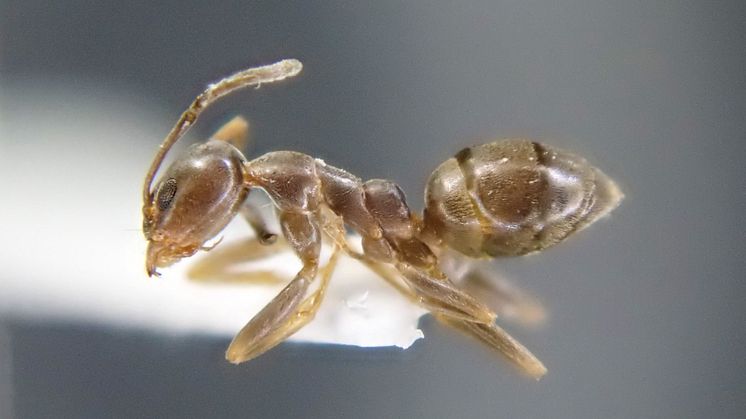
Press release -
Is diet breadth the key factor for successful alien ant invasions in new habitats? Discovering from “intraspecific differences” in the Argentine ants - Kindai University
A research group comprised of representatives from Kindai University’s Graduate School of Agriculture (Nara, Nara Prefecture), National Institute of Environmental Studies (Tsukuba, Ibaraki Prefecture), and Center for Ecological Research, Kyoto University (Otsu, Shiga Prefecture) conducted research on the Argentine ant Linepithema humile Mayr, one of the hazardous alien species that may have a significant impact on the natural environment and threaten biodiversity, and discovered that “LH1” ants, which make up the majority of supercolonies distributed throughout the world, have greater diet breadth than those of the less successful supercolonies.
The findings of this research are expected to provide a useful viewpoint to predict invasions of alien species, and to help early detection of potentially invasive species and preventive measures.
- Investigated intraspecific differences in Argentine ant, “one of the 100 most hazardous invasive species in the world”, to clarify what factors are related to the successful invasion.
- Discovered that “LH1” ants, which make up the majority of supercolonies distributed throughout the world, have greater diet breadth than those of the less successful supercolonies.
- The findings of this research provide a useful viewpoint to predict invasions of alien species, and to help early detection of potentially invasive species and preventive measures.
This research was published online in the British “Scientific Reports” on February 3rd, 2021, at 7:00pm (Japan time).
https://www.nature.com/articles/s41598-021-82464-1
[About Publication]
Journal name: Scientific Report (Impact factor: 3.998 / 2019)
Research paper title: Intraspecific differences in the invasion success of the Argentine ant Linepithema humile Mayr are associated with diet breadth
Authors: Yugo Seko1, Koya Hashimoto2, Keisuke Koba3, Daisuke Hayasaka1, Takuo Sawahata1
Institutions:
1. Graduate School of Agriculture, Kindai University
2. National Institute of Environmental Studies
3. Center for Ecological Research, Kyoto University
Lead author: Yugo Seko
Corresponding authors: Yugo Seko, Daisuke Hayasaka
Global distribution of Argentine ant supercolonies

